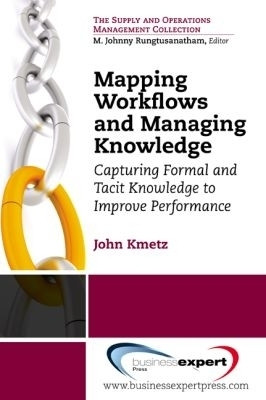Mapping Workflows and Managing Knowledge: Capturing Formal and Tacit Knowledge to Improve Performance(English, Paperback, Kmetz John)
Quick Overview
Product Price Comparison
Workflow, process, or business process mapping has been discovered by organizations of all kinds as being a powerful tool to analyze and improve their internal processes. It has attracted major attention from software vendors, including Oracle and IBM, who market systems that are designed to map processes and quantify all aspects of their operations. These systems can be very effective at capturing the formal or explicit knowledge inherent to any workflow; however, a long-term problem with these approaches is that the full "knowledge base" underlying these processes contains many elements which are "tacit knowledge." Despite being outside of the formal knowledge base, tacit knowledge must be addressed when describing the nature and functioning of processes. A key feature of the mapping method used in this book is that it makes both formal and tacit knowledge explicit in the workflow maps it produces. Much of what has been learned in the years of applying and teaching this method is that software-driven approaches are hobbled by the complications presented by tacit knowledge in workflows. Until both formal and tacit knowledge are understood these software-driven approaches cannot achieve their full potential. Consequently the mapping process here, by necessity, becomes a method for managing knowledge as well as a method of mapping the flow of materials and information. While it is a basis for process improvement in its own right, it can support development of both software-driven process mapping and the creation of dynamic programs on the basis of accurate understanding of existing workflows.


